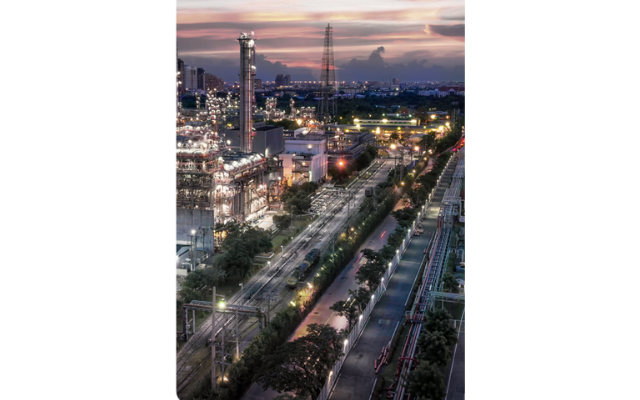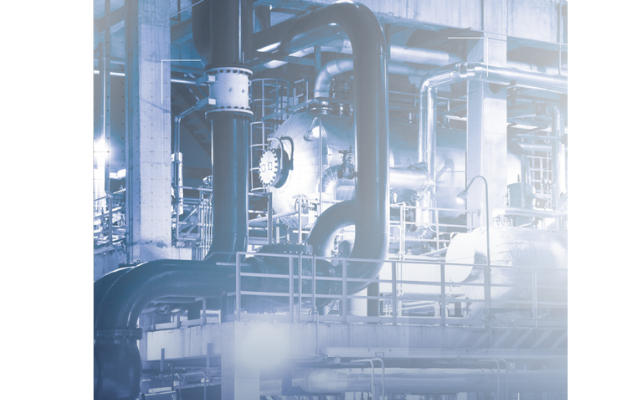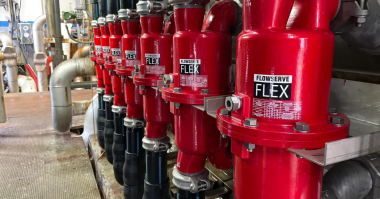Magnetic drive pumps and other heavy-duty sealless pumps offer a more reliable method to move lethal, toxic, flammable and other aggressive fluids. These pumps provide the best options to meet environmental standards without compromising pump performance and reliability because they are based on the proven hydraulic design of the API 610 pumps.
As environmental requirements surrounding volatile organic compounds (VOCs) have become more stringent, many petrochemical and oil and gas companies have incorporated sealless technologies into their operations.
Heavy-duty sealless pumps, including magnetic drive (mag drive) pumps, offer a more reliable method to move lethal, toxic, flammable and other aggressive fluids.
Using sealless pumps to meet strict sustainability requirements often meant sacrificing hydraulic performance and reliability. However, this trade-off is no longer necessary when using sealless pumps that meet the API 685 standards for centrifugal pumps.
These pumps provide the best options to meet environmental standards without compromising pump performance and reliability because they are based on the proven hydraulic design of the API 610 pumps.
The API 685 standard
The API 685 standard addresses the minimum requirements for sealless pumps manufactured for heavy-duty petrochemical and oil & gas applications. It applies to mag drive and canned motor pumps and is very similar to the API 610 standard—one commonly associated with centrifugal pumps in the petroleum, petrochemical and natural gas industries.
When application of sealless pumps is indicated, relevant industry operating experience suggests sealless pumps produced to the API 685 standard may be used for many applications and should be applied when conditions exceed any of the following:
- Discharge pressure of 1900 kPa (275 psig)
- Suction pressure of 500 kPa (75 psig)
- Pumping temperature of 150°C (300°F)
- Rotative speed of 3600 rpm
- Rated total head of 120 m (400 ft)
- Impeller diameter of 330 mm (13 in)
Balancing sustainability, reliability and efficiency
A common challenge faced by operators in the petrochemical and oil & gas industries is how to meet increasing environmental requirements without sacrificing reliability or efficiency.
Sealless mag drive pumps offer a way to balance sustainability and performance needs in environmentally critical applications. Extremely versatile, they provide outstanding leakage protection and can handle the high pressures, temperatures and aggressive/toxic media often found in the oil & gas and hydrocarbon industries.
Mag drive pumps meet the higher sustainability requirements of the API 685 standard through a variety of innovative design features, including:
Leakage-free containment shell
API 685 mag drive pumps use a containment shell made from alloy C4, a nickel-based material, for high-efficiency performance and high corrosion resistance. Alloy C4 containment shells prevent process fluids from escaping from the pump and leaking into the atmosphere.
Backup renewable rings made from non-sparking material further protect the containment shell and prevent fluid leakage in case of a failure.
Internal flushing to eliminate external leakage
Instead of using an external flushing system, which may not hold up under aggressive conditions, API 685 mag drive pumps leverage an internal flushing path designed to efficiently cool the magnets and lubricate sleeve bearings. The process fluid is fed from a high-pressure area behind the impeller to the magnetic coupling, and a self-cleaning filter is installed to prevent contamination.
The injected fluid is divided into two flow paths. The first path lubricates the bearings, creating a fluid film between the parts, while the second path cools the magnets, removing possible process particles from the end zone of the containment shell. Finally, fluid enters the lower-pressure area behind the impeller and flows back to the impeller vanes through balancing holes.
The pressure difference between the inlet and outlet magnetic coupling chambers guarantees the correct flushing flow and prevents vaporization of the product in the pump.
Lubricated radial and thrust bearings
The coupling design of API 685 mag drive pumps employs a dynamic thrust balancing system and silicon-carbide (SiC) bearings that compensate for expansion in high-temperature conditions. This system eliminates the need for mechanical thrust bearings and increases pump reliability, longevity and efficiency while also reducing operating costs.
Typical applications
Because of their ability to deliver reliability and performance, API 685 mag drive pumps are ideally suited for critical applications such as:
- Petroleum refining, production and distribution
• Petrochemical and chemical processing
• Difficult-to-seal liquids
• Toxic, aggressive or flammable liquids
• High-temperature applications
• Gas industry services
• Biofuels
• Boiler circulation
• Power plants
• General industrial
 Reduced maintenance and associated costs
Reduced maintenance and associated costs
In addition to features designed for sustainability, API 685 mag drive pumps can also reduce maintenance labor and costs. These pumps utilize a standard back pullout design, which simplifies general maintenance and inspections because the casing stays in line and the piping connections remain intact.
This contained back pullout design also makes drive-end maintenance easy. The process fluid remains entirely confined. Therefore, maintenance personnel aren’t exposed to potentially harmful process fluids.
Reliability and energy savings examples
The reliability payback of one API 685 mag drive pump in a recent 50-pump program was 1.84 years, as calculated by the user. This payback is based on the significant reduction in cost and time to upgrade the pullout assemblies instead of completely replacing the pumps.
Energy payback on the same mag drive pump was calculated using the following facts from an actual scenario:
- Reduction of 100 kW/h (135 hp/h)
• Power cost reduction of $35,000 annually using $0.04 per kW/h and around-the-clock operation
• 0.62 years payback on energy savings
Conclusion
API 685 mag drive pumps are 100% leakage-free, providing a sustainable alternative to other pumps. Because of their innovative design features, these pumps safely handle hazardous and volatile fluids in extreme conditions, making them ideal for use in petroleum, petrochemical and natural gas applications where companies have to balance performance, reliability and sustainability.
Flowserve offers a variety of API process pumps, including the new HPX-Mag drive pump. The HPX-Mag drive pump is the pump of choice for severe chemical, petrochemical, refining and heavy-duty industrial services where full compliance with API 685 is required.




